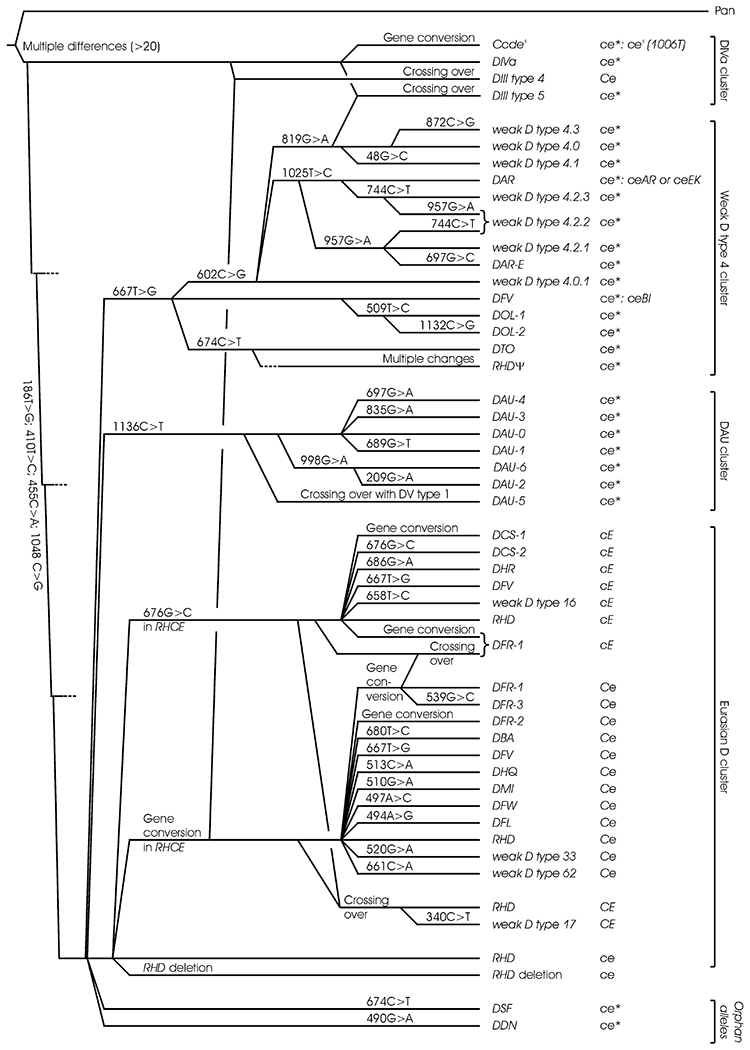Fig. 2.

Phylogeny of Rhesus haplotypes. The phylogenetic tree is based on a previous tree for RHD20 taking into account the available data on Rhesus haplotypes. Four main clusters of RHD alleles have been described. The RHD alleles of the DIVa cluster share the three characteristic ancestral amino acids 62F, 137V, and 152T; those of the weak D type 4 cluster the F223V substitution; and those of the DAU cluster the T379M substitution. These three “African” clusters are segregated from the Eurasian D cluster with “normal” RHD as the primordial allele. The RHD alleles of the three African clusters generally occur in a cDe haplotype, which indicates that the cE and Ce alleles of RHCE evolved in the Eurasian branch after its divergence from the other branches. For each RHD allele, the accompanying RHCE allele is indicated. ce* is a general indicator of a ce-like allele which frequently may be a variant; if known, the typically associated RHCE alleles are given.
